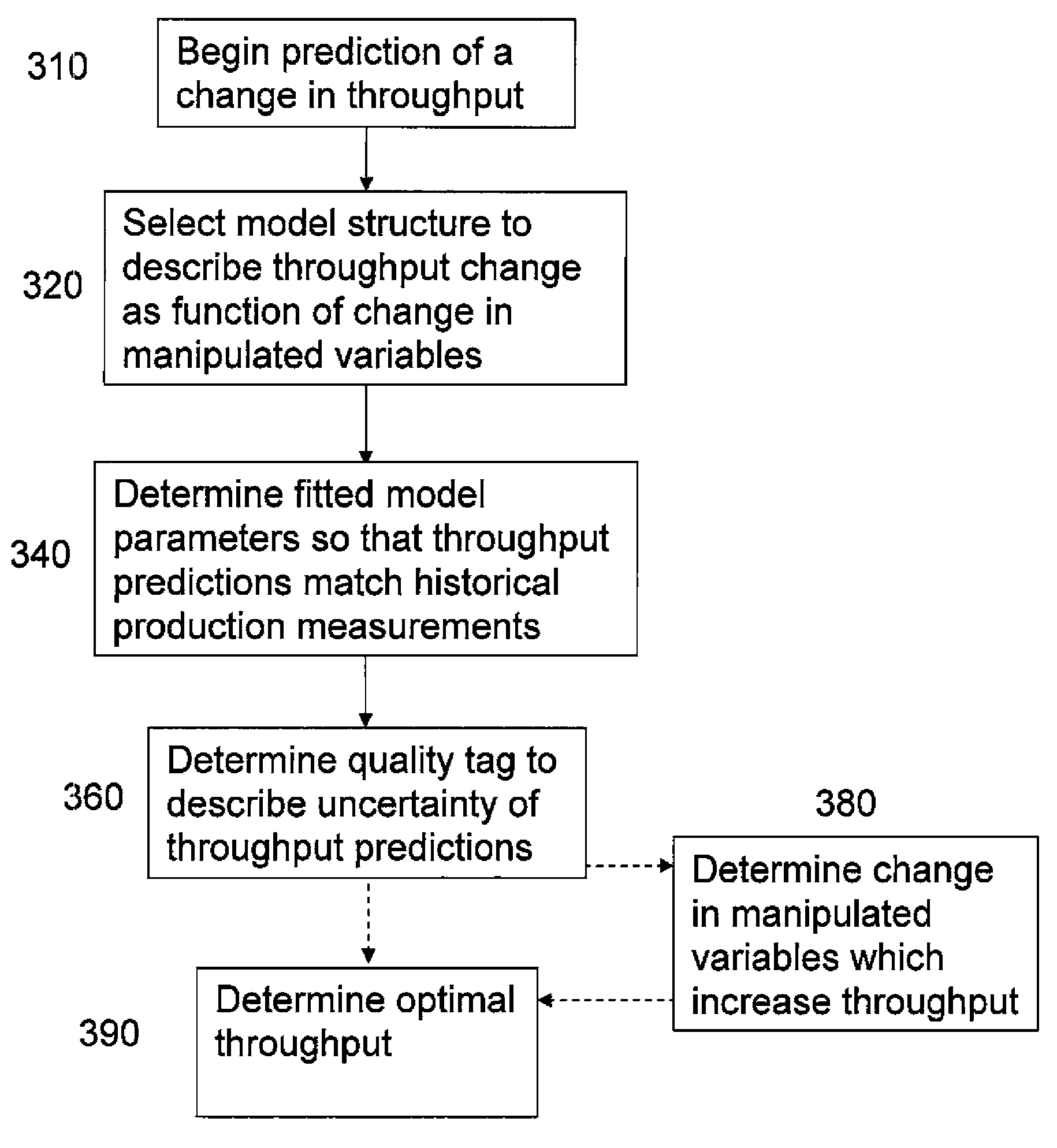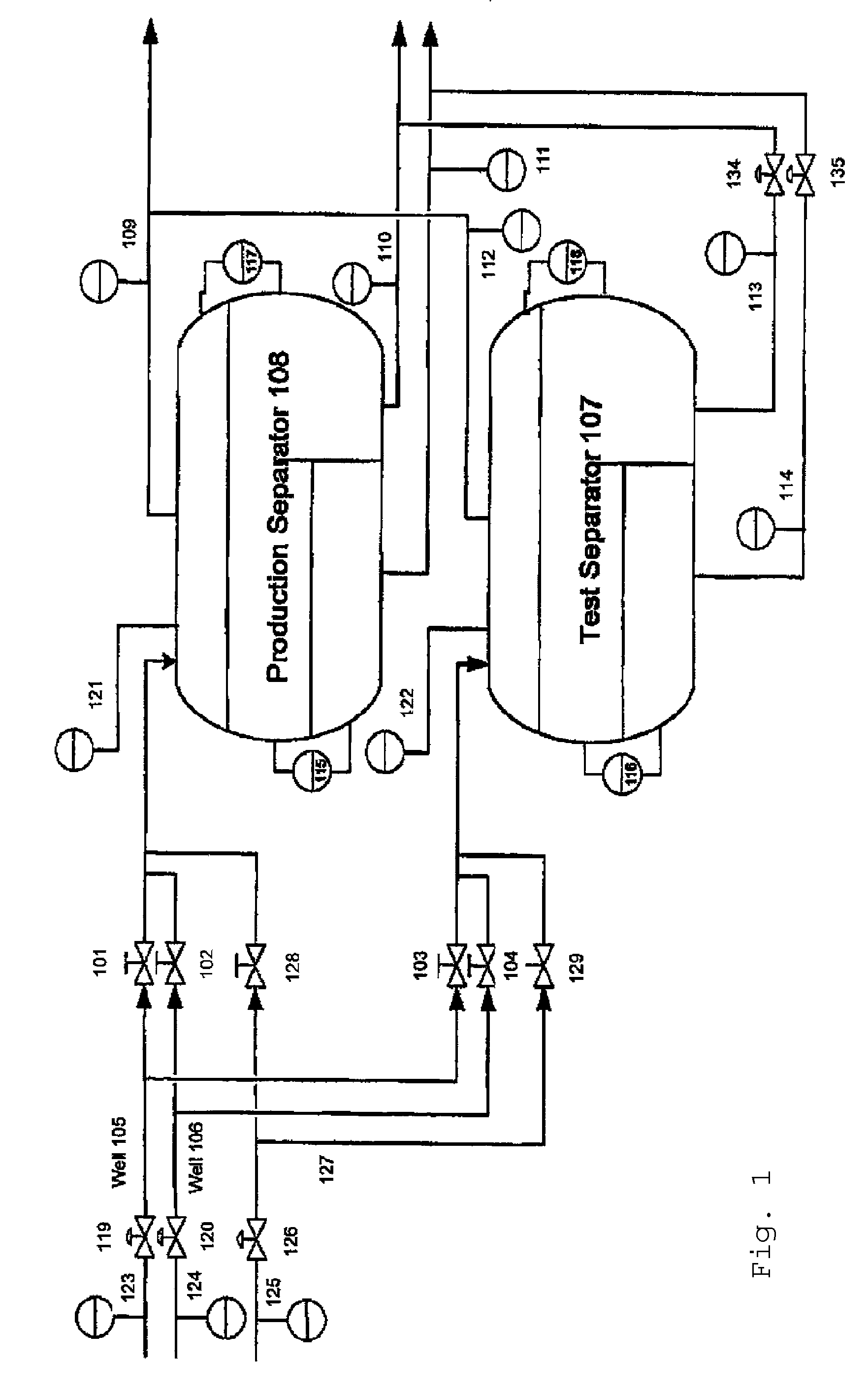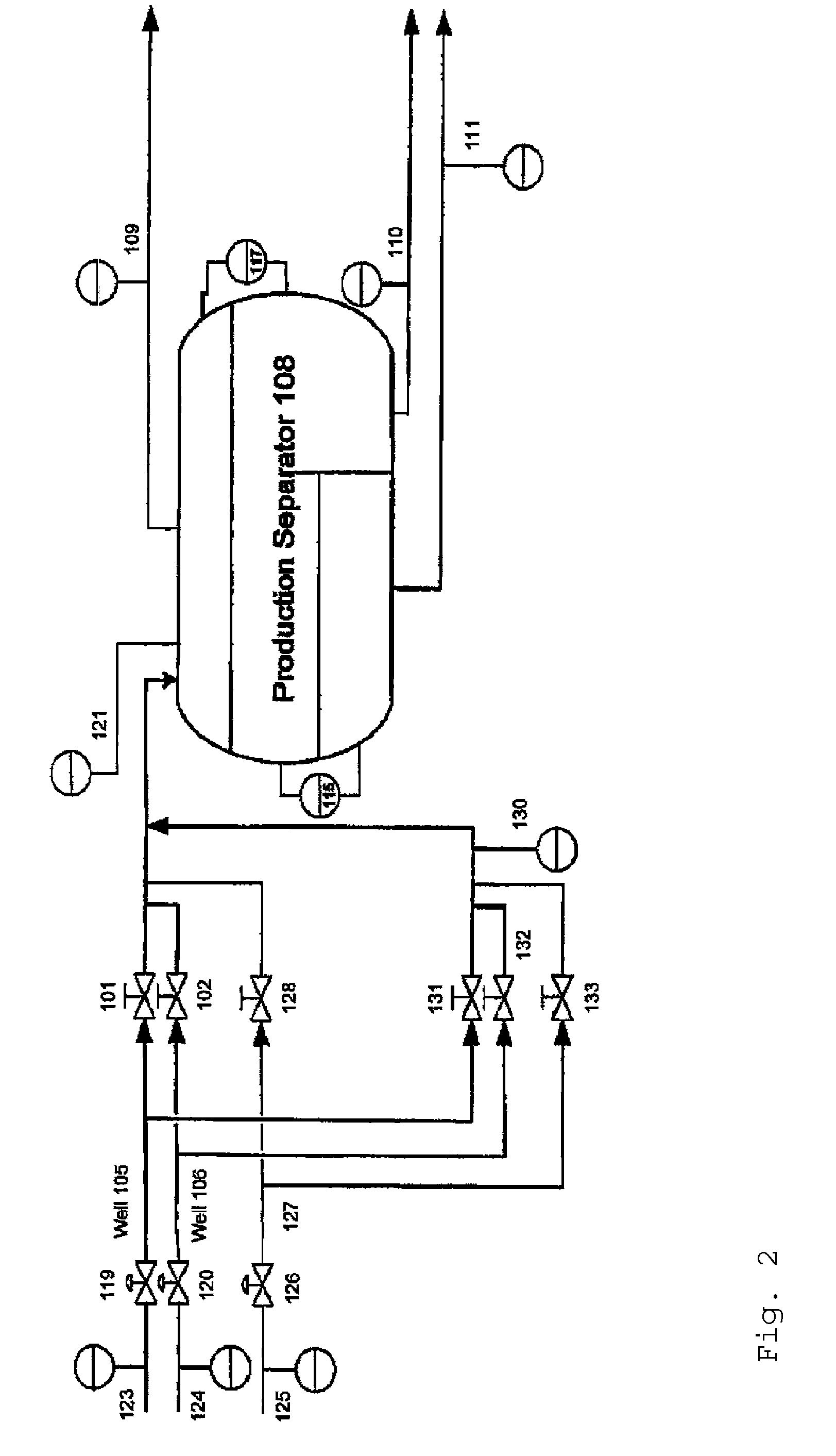Method For Prediction In An Oil/Gas Production System
a technology of oil/gas production system and prediction method, which is applied in the direction of instruments, separation processes, and well accessories, etc., can solve the problems of reducing throughput, increasing the cost of multi-rate well testing, and reducing the reliability of the system, so as to reduce the uncertainty
- Summary
- Abstract
- Description
- Claims
- Application Information
AI Technical Summary
Benefits of technology
Problems solved by technology
Method used
Image
Examples
Embodiment Construction
[0047]In FIG. 1 is shown a schematic drawing of an oil and or gas production system where the present invention may be applied.
[0048]The system comprises three wells 105, 106, 127, a production separator 108 and a test separator 107. The invention may naturally be also used in systems comprising two wells, or more than three wells.
[0049]123 designates an upstream valve pressure of a valve 119 of a well 105; 124 designates an upstream valve pressure of a valve 120 of a well 106, and 125 designates an upstream valve pressure of a valve 126 for well 127. The term valve should herein be understood in a broad sense, i.e. to include a choke, a gate valve, a routing valve or a control valve.
[0050]101, 102, 128 designate routing valves for production separator 108 for the wells 105, 106 and 127, respectively.
[0051]103, 104 and 129 designate routing valves for test separator 107 for the wells 105, 106 and 127, respectively.
[0052]109 designates a flow rate measurement device for gas of produc...
PUM
 Login to View More
Login to View More Abstract
Description
Claims
Application Information
 Login to View More
Login to View More - R&D
- Intellectual Property
- Life Sciences
- Materials
- Tech Scout
- Unparalleled Data Quality
- Higher Quality Content
- 60% Fewer Hallucinations
Browse by: Latest US Patents, China's latest patents, Technical Efficacy Thesaurus, Application Domain, Technology Topic, Popular Technical Reports.
© 2025 PatSnap. All rights reserved.Legal|Privacy policy|Modern Slavery Act Transparency Statement|Sitemap|About US| Contact US: help@patsnap.com



